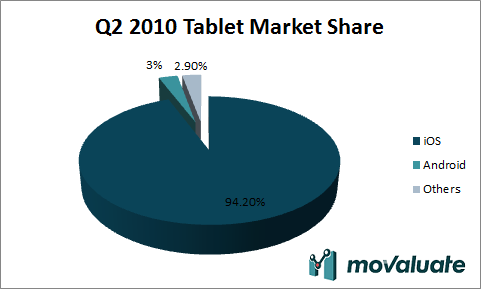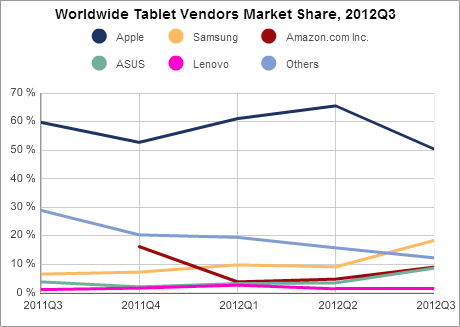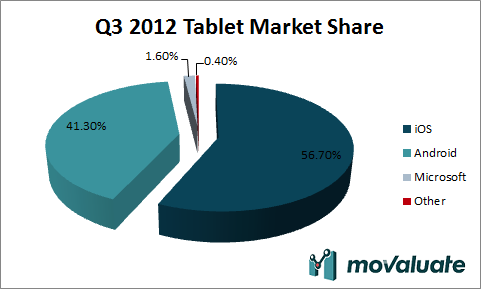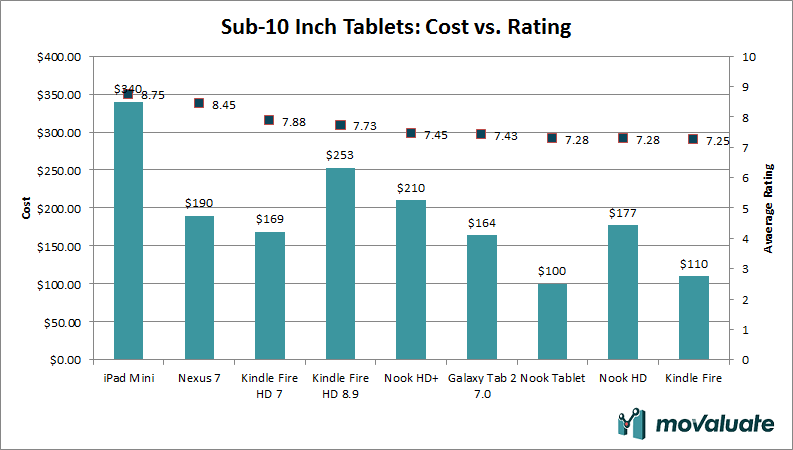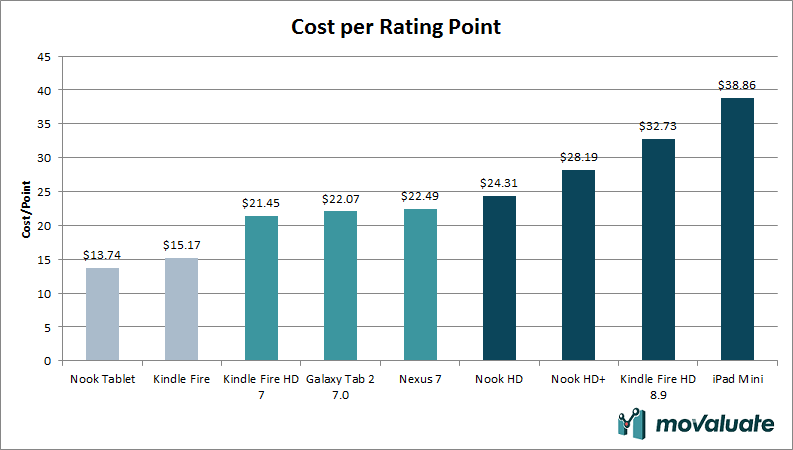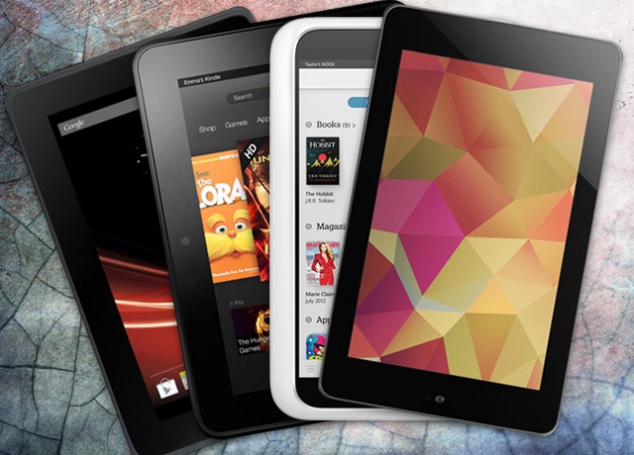Does the word Honeycomb ring a bell? It was Google’s first step in propping up the 10 inch tablet market in which Android was getting ready to compete with the uncontested king of the hill, the iPad. The 10 inchers had a rough start with their nascent app markets and unremarkable performance.
SA - Global Tablet Vendor Market Share: Q3 2010
Although worldwide tablet purchases increased 300% year over year in the second quarter of 2011 (up to 13.6 million units), Android saw its market share drop from 34% down to 26.8%. This however, relative to Q2 of 2010 (shown above) where Android accounted for a meager 2.9% of tablet sales, was still promising progress.
Fast forward to 2012 and we can see that Android-and a handful of OEMs-are busy clawing at Apple’s market share:
IDC - Android Tablets Gain Momentum in the Third Quarter
Now that Android’s tablet software and hardware have matured into handsome, articulate and well mannered specimens, they have become legitimate competition to Apple’s venerable iPad. Although the release of the iPad 3rd gen greatly bolstered sales in Q2 of 2012, Apple saw a steep decline in market share as a slew of tablets from ASUS, Samsung and Amazon, began to:
“Skate to where the puck is going to be.” -Wayne Gretzky via Steve Jobs
FYI the puck is going to the sub-10 inch tablet market and iPad Mini was a slow skater.
SA - Android Captures Record 41 Percent Share of Global Tablet Shipments in Q3 2012
What does this mean for you? It means tablets cheap and aplenty a.k.a time to buy a tablet. The question then becomes, which tablet will give you the most value for your money?
To answer that question, we took a look at the pricing and ratings of 9 of the most popular sub-10 inch tablets on the market. We analyzed two main aspects for each device:
- Fair Market Value
- Average Rating
The fair market value is based on today’s (1/23/13) going price, and each tablet’s average rating is calculated by averaging each devices rating from each of these four publications:
- Engadget
- CNET
- Phone Arena
- The Verge
The picture that this paints can be seen here:
Cost vs. Average Rating, ordered by rating
The general trend appears to be that the more you pay, the better rating you receive, but not by that much. Every device reviewed scored somewhere between 7.25 and 8.75, that’s only a spread of 1.25 points. What that means is that manufacturers have more or less been doing a fairly good job with these tablets.
If we divide the fair market value by the rating, we can find out how much each ‘point’ in a device’s rating actually costs:
Cost per Rating Point, ordered lowest to highest
It isn’t surprising that the original Kindle Fire and Nook Tablet are the lowest cost-per-point tablets since they were reviewed over a year ago (thus their prices have dropped the most), but the trio of 7 inch tablets found in the Kindle Fire HD 7, Galaxy Tab 2 7.0 and Nexus 7 offer the best value out of the current-gen competitors:
- Kindle Fire HD 7: Average rating of 7.7 and Fair Market Value of $169
- Galaxy Tab 2 7.0: Average rating of 7.43 and Fair Market Value of $164
- Nexus 7: Average rating of 8.45 and Fair Market Value of $190
For $150-$200, these three tablets are money well spent. If you really want to get a tablet on a budget the Nook Tablet and Kindle Fire get you solid dual-core offerings at $100-$110. As for the Fire HD 8.9 and Nook HD+, we can really only recommend these (from a value standpoint) if you have already heavily invested into either Amazon or Barnes and Noble’s ecosystems.
Last but not certainly not least we have the iPad Mini, which fared poorly in the value test, but scored very highly across the board getting 9/10 marks from Engadget, Phone Arena and the Verge. Apple products have never really been about value per se, so it may not really have a place in this analysis, but for those who have a strong affinity for iOS (or OS X) or already own an Apple product that isn’t a tablet, the iPad Mini is a great way to dip your toes into the sub-10 inch tablet waters, without forking over $499 for the standard iPad.
IDC predicts that there will be a “Mini-tablet surge” in 2013 where the tablet market as a whole will grow by at least 42%, and tablets with screens of 8 inches or smaller will account for as much as 60% of sales. For most people a tablet may seem like an unnecessary luxury, but we think that they are far more valuable than they may first appear. Keep an eye on prices with Movaluate and get the most tablet for your money.

